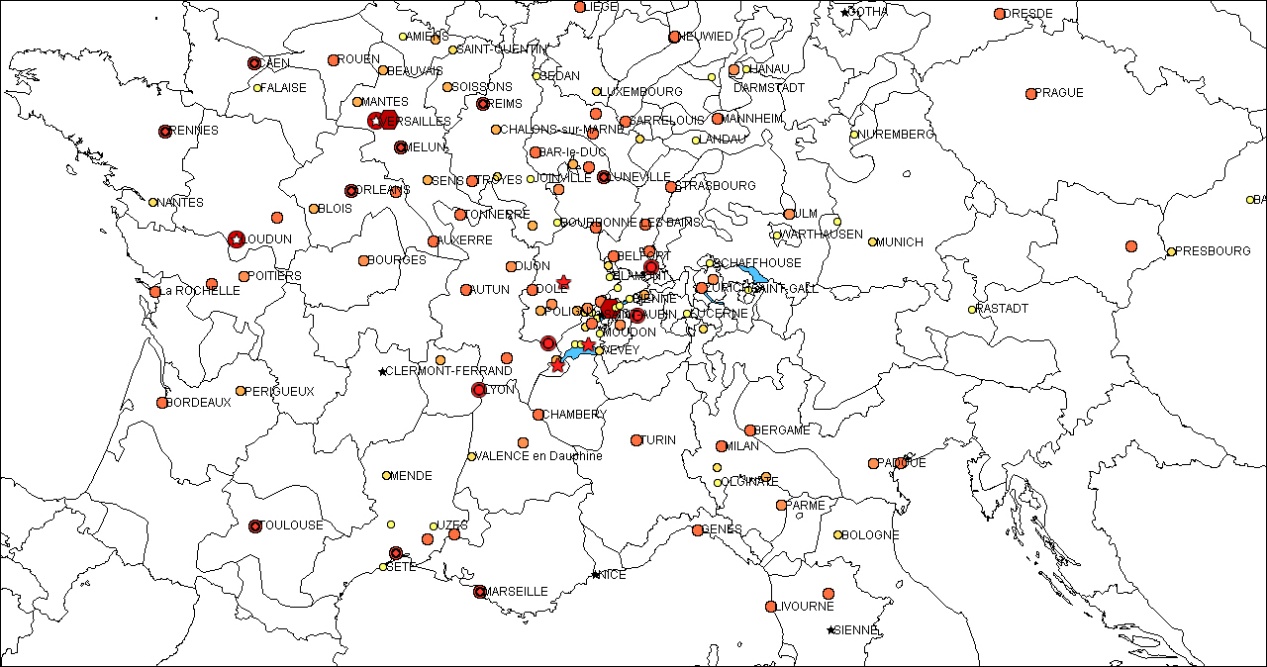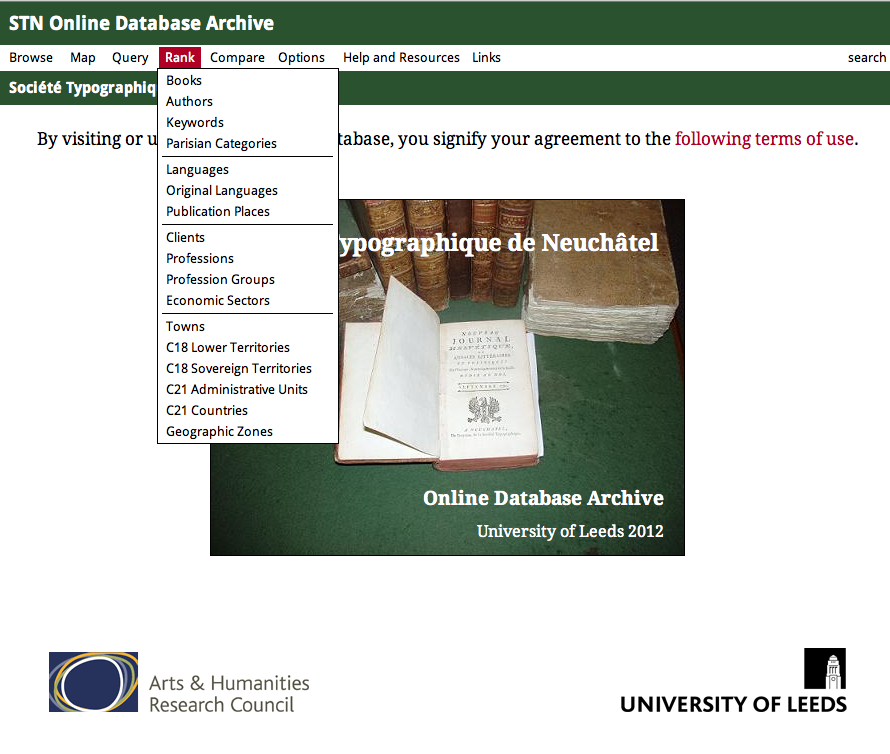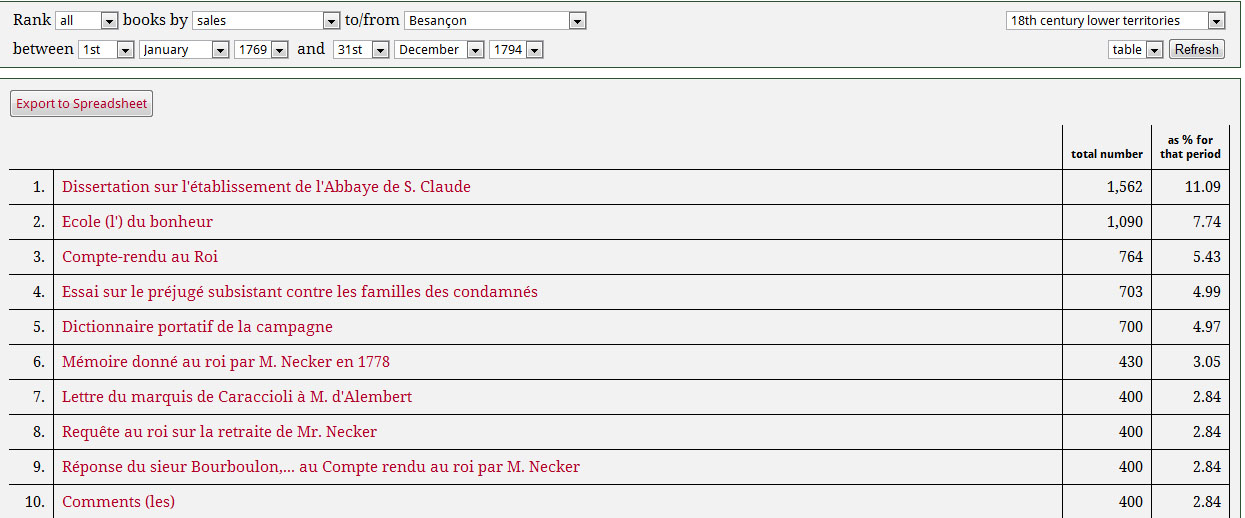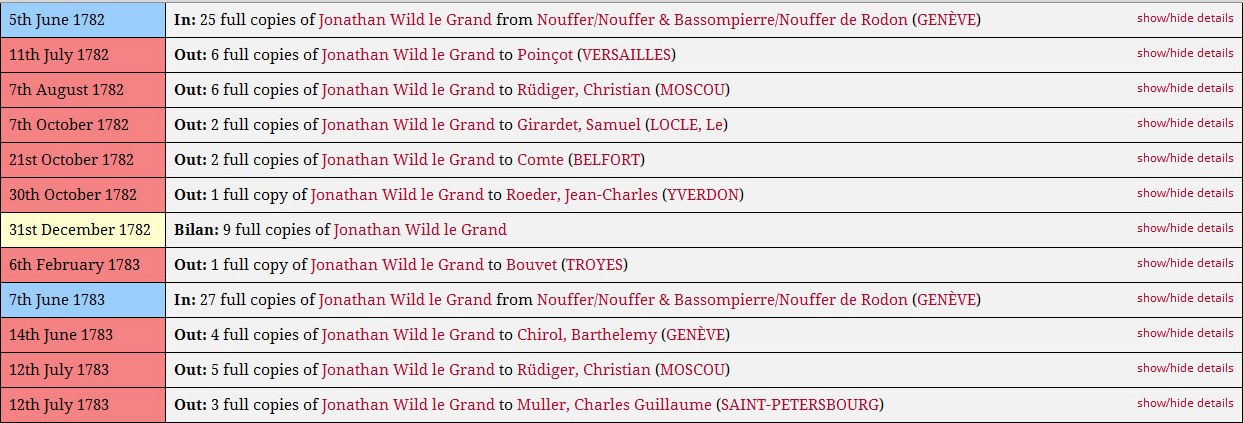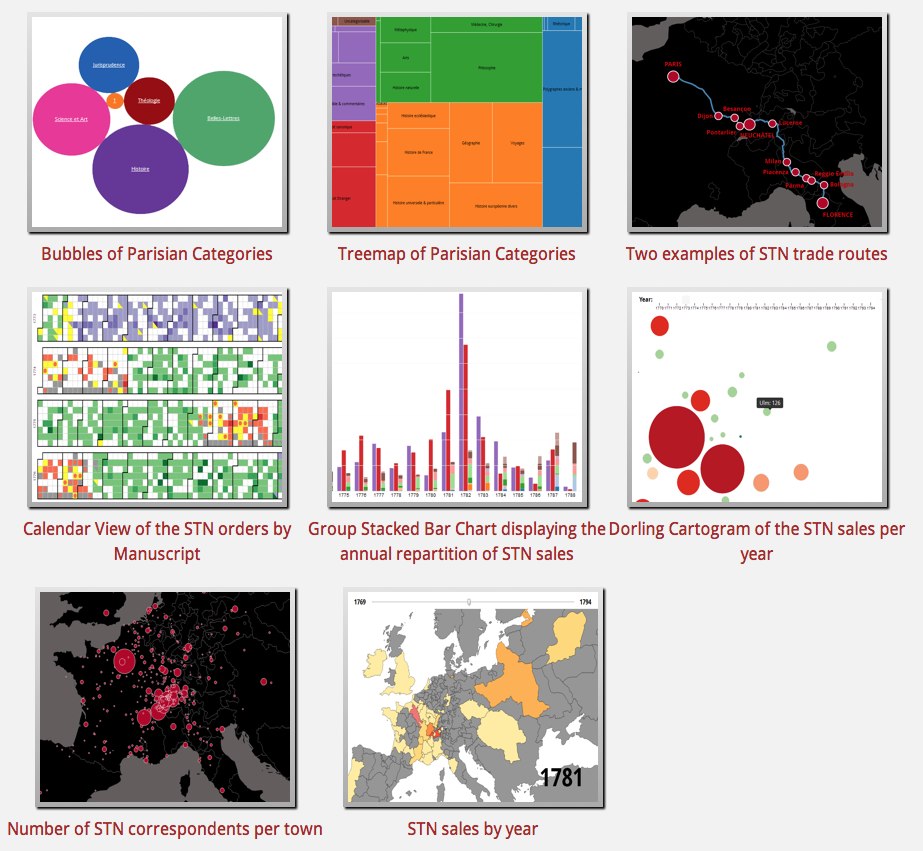The French Book Trade in Enlightenment Europe Project and the STN Database
Simon Burrows and Mark Curran
The French Book Trade in Enlightenment Europe (FBTEE) database maps the trade of the Société Typographique de Neuchâtel (STN), a celebrated Swiss publishing house that operated between 1769 and 1794. The database was published online on June 25, 2012 and is available here. It is intended to be a major new tool for literary and historical research in Enlightenment studies, book and business history, and bibliography.[1]
As the STN sold the works of other publishers alongside its own editions, the STN archives have long been considered a representative, as well as uniquely rich, source for studying the book trade and dissemination of ideas in the late Enlightenment. Moreover, because the STN traded from the Prussian ruled Swiss-principality of Neuchâtel, it could deal in all genres of book, supplying clandestine copies of illegal and pirate editions banned in France and many other states. Strategically based in the middle of Europe and shielded by the Prussian monarchy, the Neuchâtelois booksellers developed client networks spanning the continent from Dublin to Naples, Lisbon to St Petersburg. Thus the STN data can offer internationally comparative insights into reading tastes during the late Enlightenment.
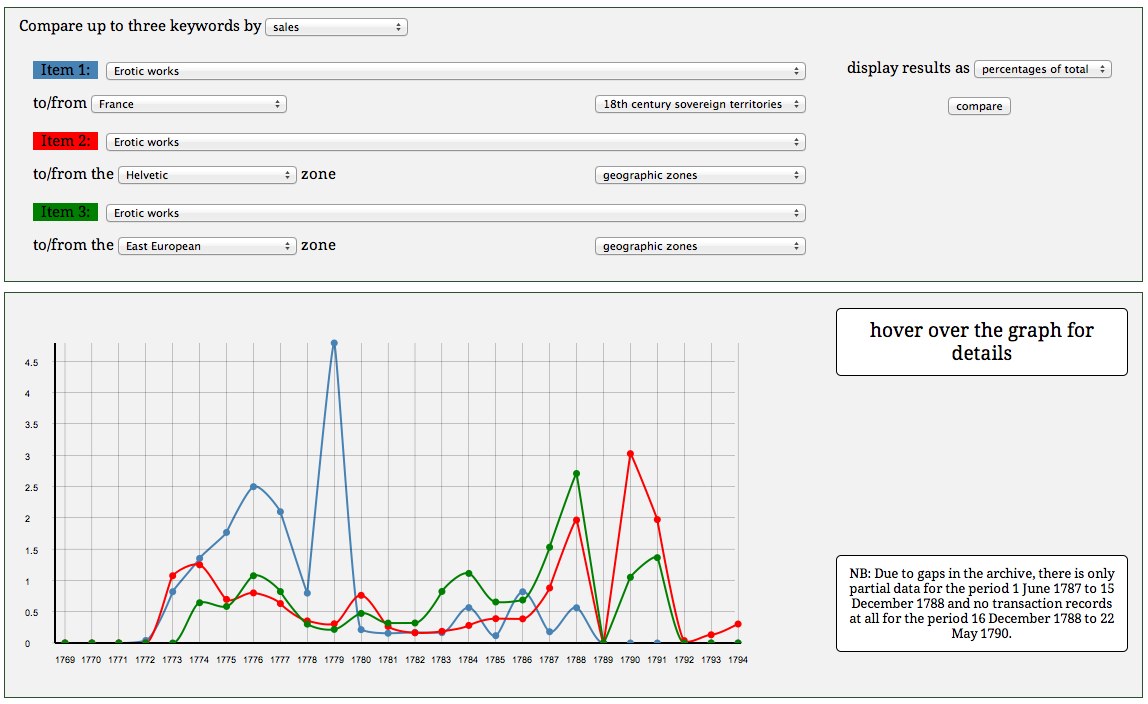
Comparative STN ‘Sales’ Trends for Erotic Works in France (Blue), Switzerland (Red), and Eastern Europe (Green)
The database was constructed using the STN’s double-entry account books. They make it possible to reconstruct almost the whole of the STN’s trade — recording both from whence every book came and to whom it was sold, as well as when each transaction occurred. Alongside this information, the database records the genre, function, content, and legal status of each work sold.
There are many ways into the STN database. Its web-based user-interface allows users to interrogate the database by a considerable range of fields, including author, title, publisher, subject matter, genre, and time-period in addition to the names, professions, and places of residence of individuals who supplied or ordered STN books. Specialised queries allow users to go further, for example identifying bestselling texts or authors for any given place and time period. Using these tools, it is also possible to chart reading tastes across Europe; changing patterns of demand over time; and networks of exchange in the print-trade. For more sophisticated queries, there are a series of option menus or filters which allow users to interrogate subsets of the data (e.g. sales of illegal books; the trade of female book dealers; or the dissemination of English works in French translation).
The authors of the database believe that their meticulously designed data structures, tools, and interface are ideally constituted for other studies of the production, distribution and dissemination, and reception of printed works and other cultural artefacts. They hope to see these features widely adopted, in order to facilitate other studies and the emergence of a network of interoperable projects.
The database resource offers a range of supporting materials to help users explore, understand, and mine the data. A drop-down ‘Help and Resources’ menu inside the data interface contains a User Guide and various other tools to help users orientate themselves (Designer notes, lists of Abbreviations and Manuscript Sources, Database totals, Visualisations and Videos, Designer Credits etc.). The video instructional and walk through materials are also available through the project website. The website also gives an overview of the project more generally and some of the uses of the database. Latest news, updates, and links to resources are available at the official FBTEE project blog.
Interpretative insights into the project’s findings are available in a series of podcasts and publications. In the case study that follows, the database’s authors showcase some of its main uses. In the process they explore an overarching interpretative question that both shapes and bedevils the interpretative volumes they are currently writing on the structure of the European book trade (vol. I) and the dissemination of ideas and discourses in the late Enlightenment (vol. II).
- [1]The French Book Trade in Enlightenment Europe project was funded by a £355,485 grant awarded to Simon Burrows by the British Arts and Humanities Research Council (AHRC). The authors are grateful to the AHRC for making their work possible, and to the University of Leeds for supplementary support and for hosting the project.↩

